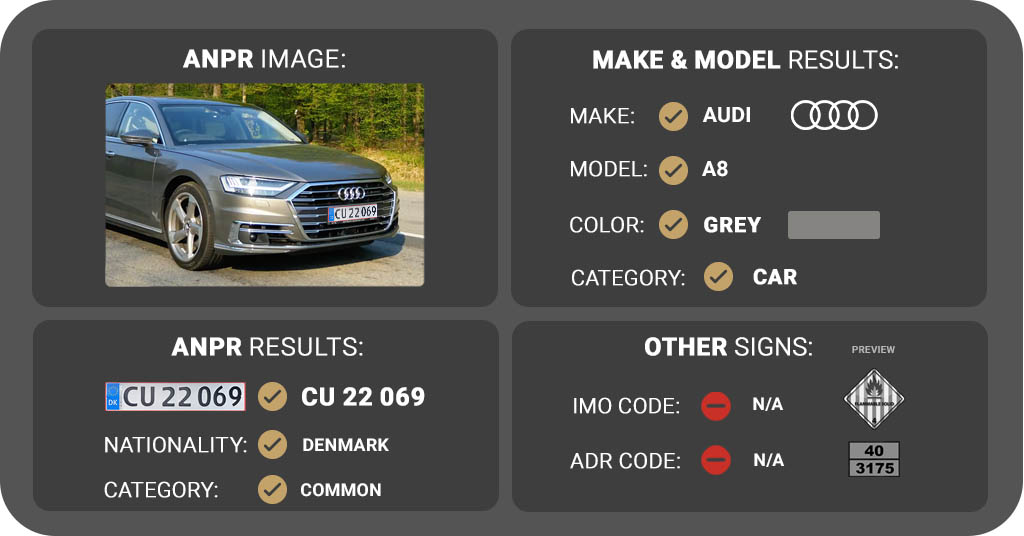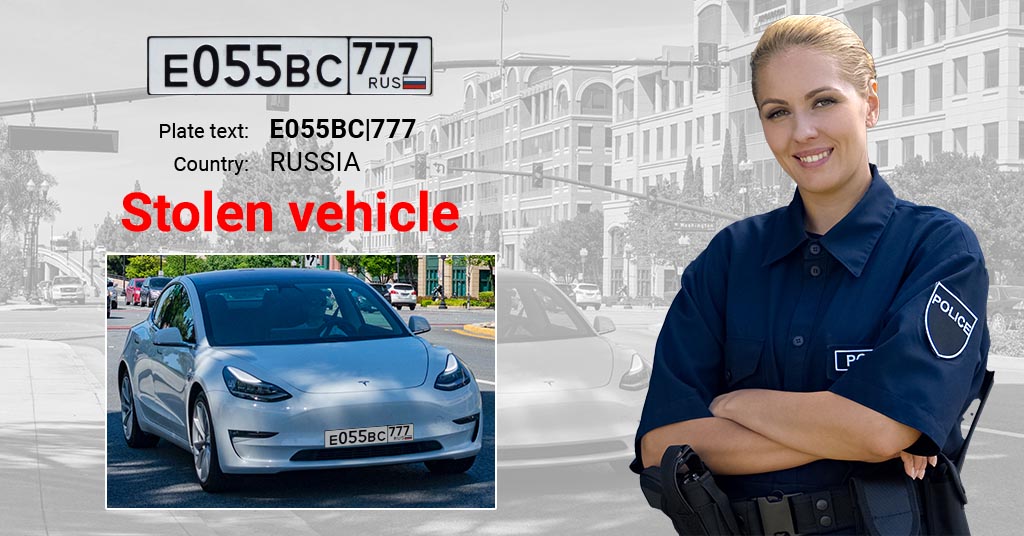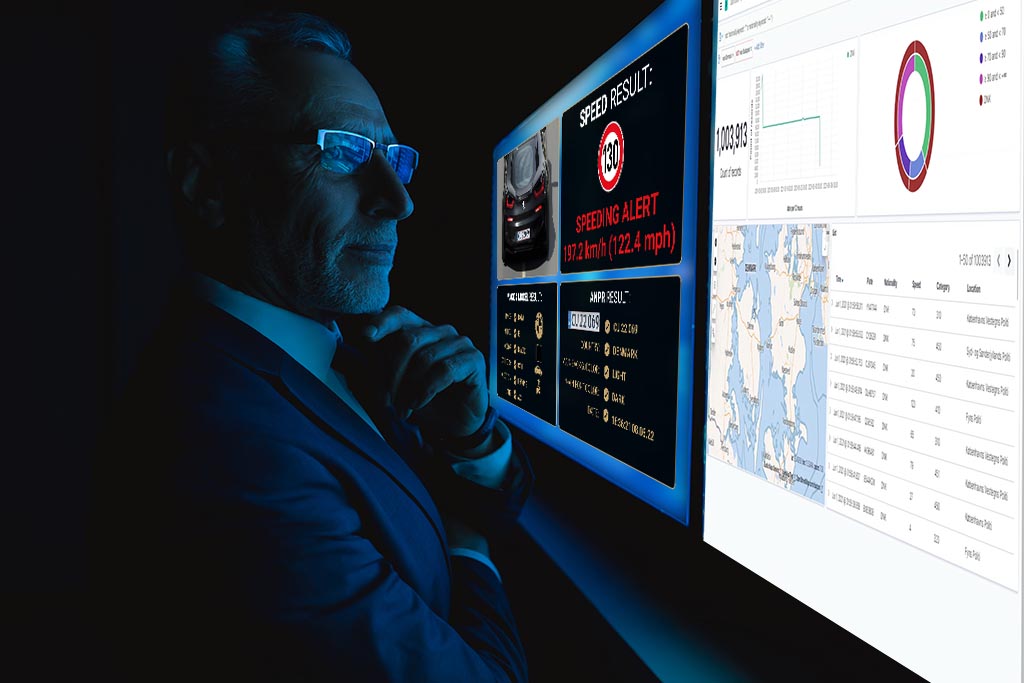Navigating the Congestion Maze: The Urgency of Accurate ANPR in Urban Mobility and Smart Cities
In the face of rapid urbanization, cities have experienced a surge in growth that has transformed urban landscapes, exacerbating the already daunting task of managing traffic congestion. This pervasive issue poses significant disruptions to efficiency, sustainability, and the overall quality of life in urban centers. However, amidst this challenge, Adaptive Recognition’s ANPR technology emerges as a beacon of hope, offering a transformative solution to mitigate traffic congestion and foster the development of smart cities.

The Symbiotic Relationship between Smart Cities and ANPR
As cities embrace the smart city paradigm, where technology and urban planning converge, ANPR stands as a cornerstone technology, underpinning the seamless operation and efficiency of these urban environments. Adaptive Recognition’s transformative impact on smart cities manifests in a multitude of ways:
- Real-time Traffic Management: ANPR systems provide cities with a real-time stream of traffic data, enabling them to identify congestion hotspots, optimize traffic signal timing, and implement dynamic lane closures to alleviate traffic jams. (1)
- Enhanced Public Safety: ANPR facilitates law enforcement by tracking stolen vehicles, identifying vehicles involved in criminal activities, and supporting investigations. (2)
- Optimized Parking Management: ANPR can guide drivers to available parking spaces, reducing the time spent searching for parking and improving parking utilization. (3)
- Smart Mobility Planning: ANPR data can inform urban planners about travel patterns, demographics, and transportation needs, enabling them to develop data-driven mobility plans. (4)
- Environmental Protection: ANPR can support congestion pricing schemes to discourage unnecessary vehicle usage during peak hours, reducing emissions and promoting sustainable transportation. (1, 5)
Measuring the Economic Value of ANPR
Studies have demonstrated the substantial economic benefits of ANPR adoption. A 2019 study by Transportation Research Board estimated that ANPR could save US cities up to $500 million annually in traffic-related costs. (6)

Quantifying the Financial Toll of Inaccurate ANPR
The effectiveness of ANPR hinges on its accuracy in capturing and recognizing vehicle license plates. Inaccurate ANPR equipment exacerbates congestion and hinders effective traffic management strategies. The financial impact of inaccurate ANPR extends beyond missed vehicles, affecting productivity, healthcare costs, and fuel consumption. A study by the European Environment Agency (EEA) estimated that the cost of missed vehicles in Europe alone is €6.8 billion ($7.4 billion) per year. (7) Inaccurate ANPR data can also lead to reduced productivity due to traffic congestion, increased healthcare costs due to air pollution, and higher fuel consumption caused by prolonged idling in traffic. (8)
A Case Study: The Cost of 1% ANPR Accuracy
To illustrate the financial impact of inaccurate ANPR, let’s consider a city that processes 50,000 vehicles per day. If the ANPR system has an accuracy rate of 99%, this means that 500 vehicles are not being correctly identified each day. If the city charges a fee of €10 per vehicle, this results in a daily revenue loss of €5,000. Over the course of a month, this translates to a loss of €150,000, and over a year, the total loss exceeds €1.8 million.
These figures highlight the significant financial impact that inaccurate ANPR can have on cities. Investing in reliable data collection systems is therefore essential for ensuring that cities are maximizing their revenue potential and optimizing their traffic management strategies.
Adaptive Recognition: A Beacon of Hope for Urban Mobility
In a world accustomed to flawless cameras, the potential of inaccurate ANPR systems can be a jarring reminder of technology’s limitations. Just as a camera that consistently misses a few details can distort the overall picture, a 1% ANPR accuracy error can lead to a significant loss of valuable data.
Adaptive Recognition, a company that has pioneered groundbreaking ANPR technology powered by machine learning transforms ANPR into a reliable tool for improving urban mobility. Adaptive Recognition’s cutting-edge technology continuously refines its recognition accuracy, adapting to changing conditions and improving performance over time. This enables Adaptive Recognition cameras to accurately identify and track vehicles even in challenging environments, such as low-light conditions, weather extremes, and complex traffic patterns. With its superior accuracy, Adaptive Recognition empowers cities to harness the true potential of ANPR.

Low-Emission Projects Around the World
Cities worldwide are embracing innovative strategies to reduce traffic congestion and emissions, demonstrating a commitment to environmental sustainability and improved urban livability. These efforts encompass a range of initiatives, including congestion pricing schemes, investments in public transportation infrastructure, and the promotion of cycling and walking-friendly environments.
In addition to congestion pricing schemes and investments in public transportation infrastructure, cities worldwide are also embracing innovative technologies to reduce traffic congestion and emissions. One such technology is MMR, which enables cities to identify the make and model of vehicles passing through a camera’s field of view. This information can be used to improve traffic management, enhance public safety, promote sustainable urban mobility, and empower urban planning.
For example, MMR can be used to identify electric vehicles (EVs) and encourage their use through targeted incentives or infrastructure development. This can help to reduce reliance on fossil fuels and improve air quality. MMR can also be used to track stolen vehicles, identify vehicles involved in criminal activities, and support investigations. This can help to keep communities safe.
Amidst this global shift towards sustainable urban mobility, several cities have emerged as pioneers in implementing innovative congestion mitigation and emissions reduction projects.
Stockholm, Sweden, serves as a prime example of a city that has successfully implemented a congestion charge system to curb traffic congestion and emissions. Since its introduction in 2007, the Stockholm congestion charge has generated over €1.7 billion in revenue, reinvested in sustainable mobility initiatives. A study by the Stockholm Environment Institute (SEI) found that the congestion charge led to a 20% reduction in car traffic, resulting in substantial decreases in nitrogen oxide (NOx) emissions and particulate matter (PM) concentrations. (9)
London, England, has taken a multi-pronged approach by introducing a congestion charge, investing in public transportation improvements, and heavily focusing on electric vehicle (EV) infrastructure, aiming to become a zero-emission city by 2050. With over 16,000 public EV charging points installed, London incentivizes residents and businesses to adopt EVs. (10)
Singapore, another city making strides in reducing congestion and emissions, implemented an Area Licensing Scheme (ALS) and expanded public transportation infrastructure while promoting cycling through dedicated lanes and bike-sharing schemes. (11)
Conclusion
Embracing ANPR for a Sustainable and Livable Future
The integration of low-emission projects aligns with the broader vision of fostering sustainable urban mobility. These initiatives complement each other in creating a more livable and environmentally friendly future for cities. ANPR, as a key technology in this transformation, can play a crucial role in optimizing traffic flow, reducing emissions, and improving overall urban mobility. As cities embrace the potential of ANPR, they pave the way for a future defined by efficiency, sustainability, and a high quality of life for residents.
Are you working on smart city projects that require ANPR expertise? Would you like to partner with us?
We offer cutting-edge ANPR solutions that can help you optimize traffic flow, improve public safety, and enhance urban mobility. With our proven expertise and innovative technology, we can help you achieve your smart city goals.
Here are some of the benefits of partnering with us for your ANPR needs:
- High-accuracy ANPR solutions: Our ANPR cameras and software can accurately read license plates in even the most challenging conditions, ensuring you get the most out of your ANPR data.
- Scalable solutions: We offer a range of ANPR solutions that can be scaled to meet the needs of cities of all sizes, from small towns to major metropolitan areas.
- Integrated solutions: Our ANPR solutions can be integrated with other city data sources, providing you with a comprehensive view of traffic and citywide operations.
If you are ready to improve your city’s mobility and enhance its safety, contact us today to discuss how our ANPR expertise can help you achieve your goals.
We are committed to helping cities become more livable and sustainable through the power of ANPR technology.
To get in touch with our Sales Director, Marton Sipos please click here: https://qrcode.adaptiverecognition.com/TcgGpJfsLBsB
References
- International Transport Forum (ITF). (2022). IVT Mobility Report 2022. Retrieved https://www.oecd.org/publications/itf-transport-outlook-25202367.htm.
- Transportation for London (TfL). (2023, January 27). Congestion Charge. Retrieved https://tfl.gov.uk/modes/driving/congestion-charge.
- WayToPark. (2023). Parking App with ANPR Integration. Retrieved https://wayleadr.com/blog/the-ultimate-guide-to-anpr-for-car-parks/.
- Arup. (2023, February 1). Singapore’s Smart Parking System: A Case Study. Retrieved https://www.arup.com/services/planning/smart-cities.
- Transportation Research Board (TRB). (2019). The Role of ANPR in Congestion Charging. Retrieved https://www.trb.org/Main/CallforRNSTransportationAndPandemics.aspx:
- Transportation Research Board (TRB). (2019). The Role of ANPR in Congestion Charging. Retrieved https://www.trb.org/Main/CallforRNSTransportationAndPandemics.aspx.
- European Environment Agency (EEA). (2019). Traffic Congestion Costs Europe €200 Billion Annually. Retrieved https://europa.eu/rapid/press-release_STATEMENT-14-83_en.htm.
- European Environment Agency (EEA). (2021). Air Pollution Costs Europe €400 Billion Annually. Retrieved https://www.eea.europa.eu/publications/cost-of-air-pollution/revealing-the-costs-of-air.
- Stockholm Environment Institute (SEI). (2019). A Case Study: Stockholm’s Congestion Charge and Its Economic Impact. Retrieved https://www.researchgate.net/publication/222558117_The_Stockholm_congestion_-_charging_trial_2006_Overview_of_effects.
- Transportation for London (TfL). (2023, January 27). Congestion Charge. Link to TfL website: https://tfl.gov.uk/modes/driving/congestion-charge
- Arup. (2023, February 1). Singapore’s Smart Parking System: A Case Study. Link to Arup website: https://www.arup.com/services/planning/smart-cities
